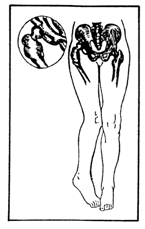
|
|
|
Treating Fractures in the Field |
|
|
Home · Textbooks and Manuals · Videos · Lectures · Distance Learning · Training · Operational Safety · Search · About Us This website is dedicated to the development and dissemination of medical information that may be useful to those who practice Operational Medicine. This website is privately-held and not connected to any governmental agency. The views expressed here are those of the authors, and unless otherwise noted, do not necessarily reflect the views of the Brookside Associates, Ltd., any governmental or private organizations. All writings, discussions, and publications on this website are unclassified.
© 2006, 2007, 2008, Medical Education Division, Brookside Associates, Ltd. All
rights reserved
|
|

